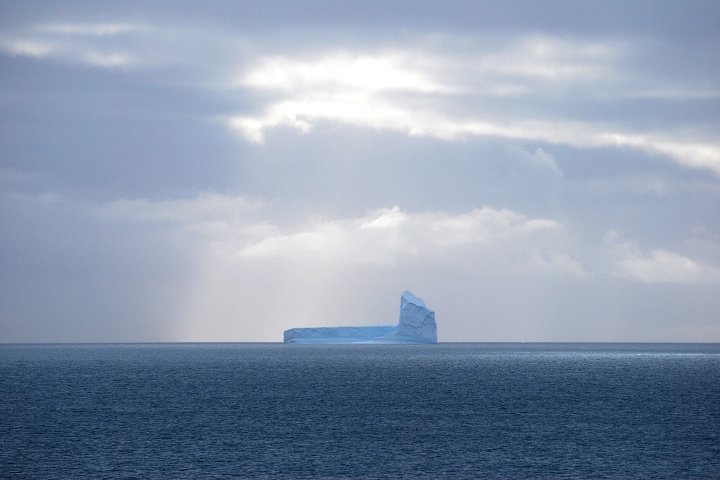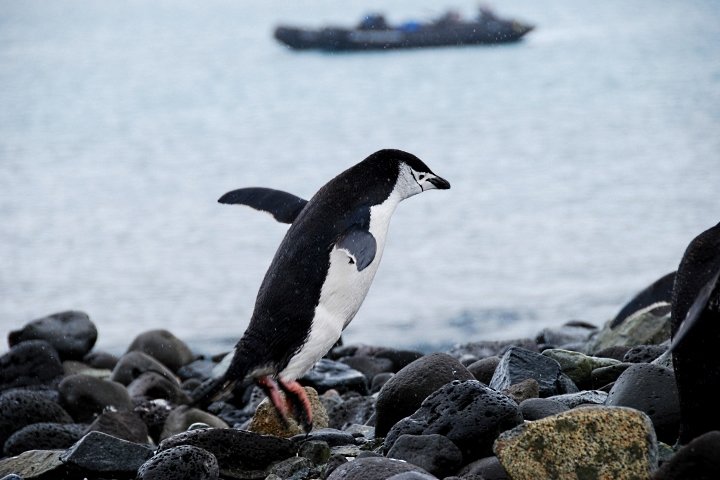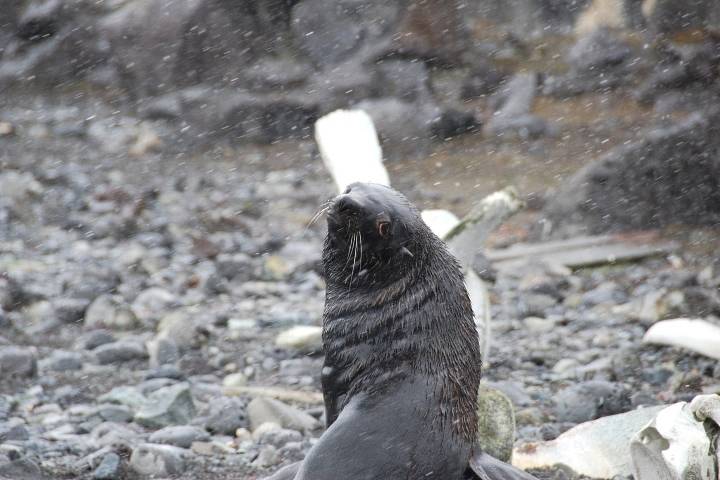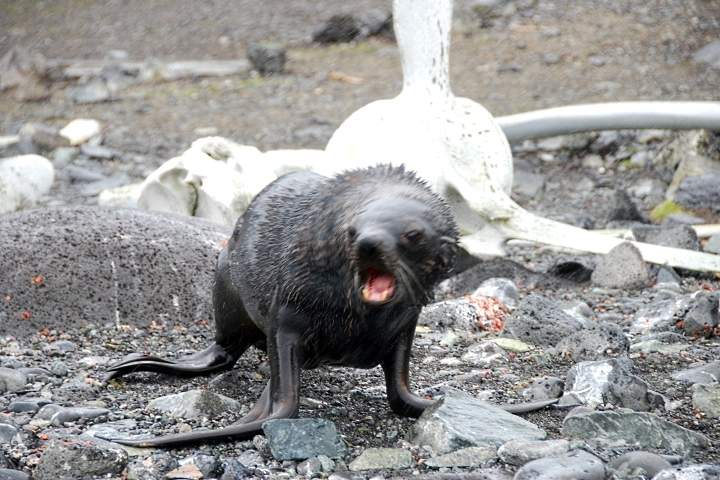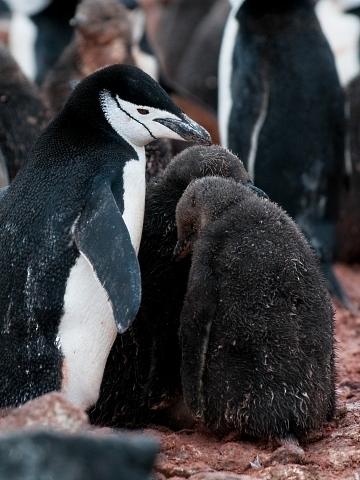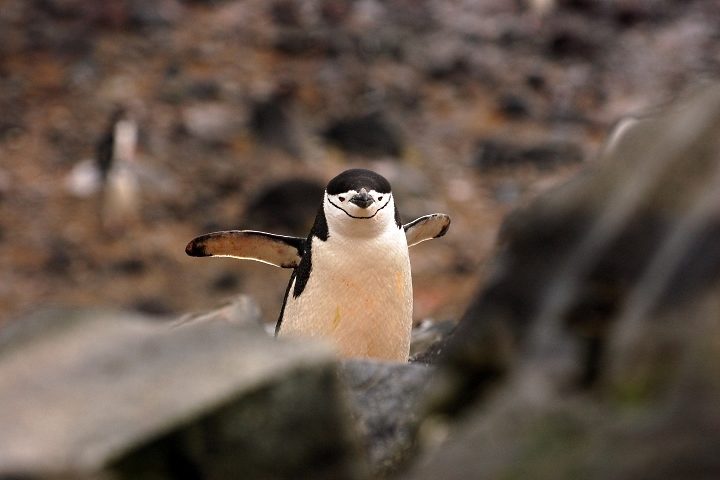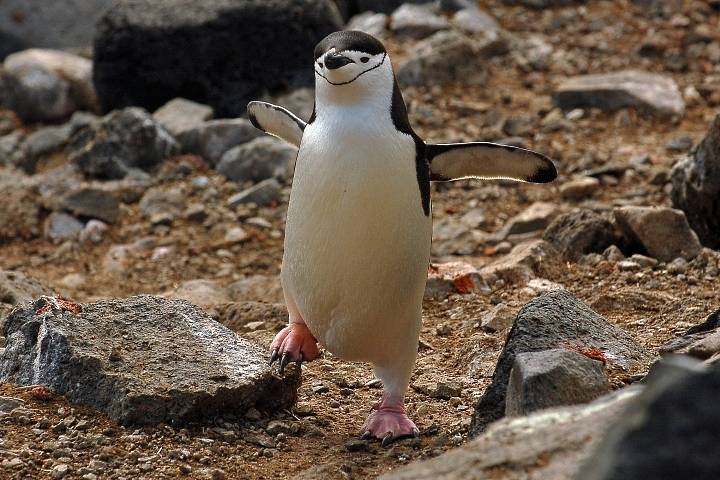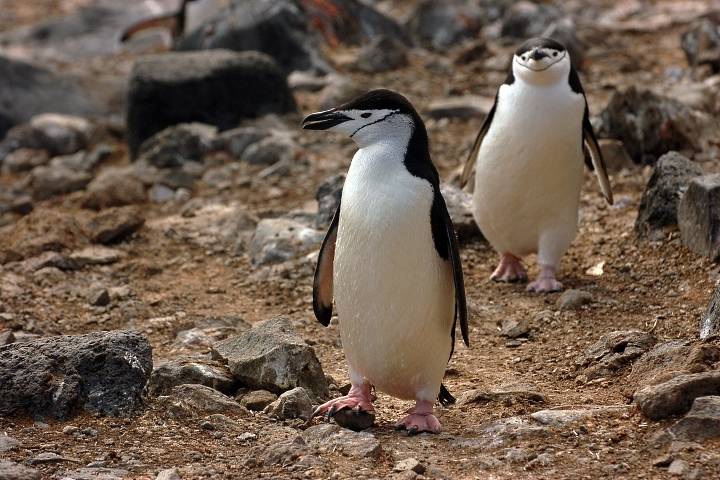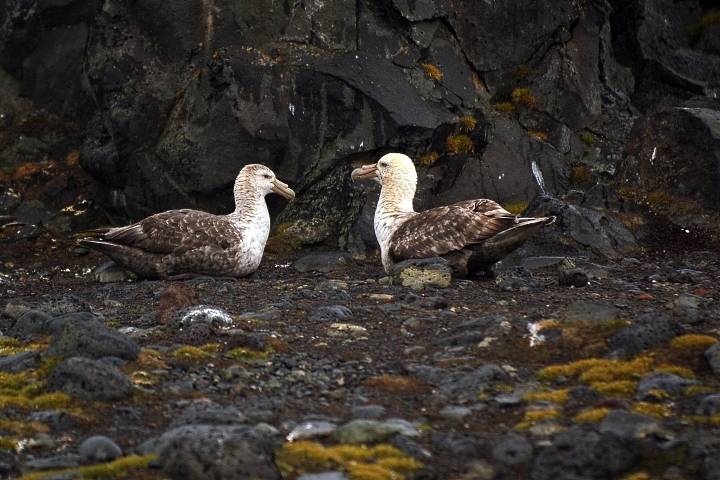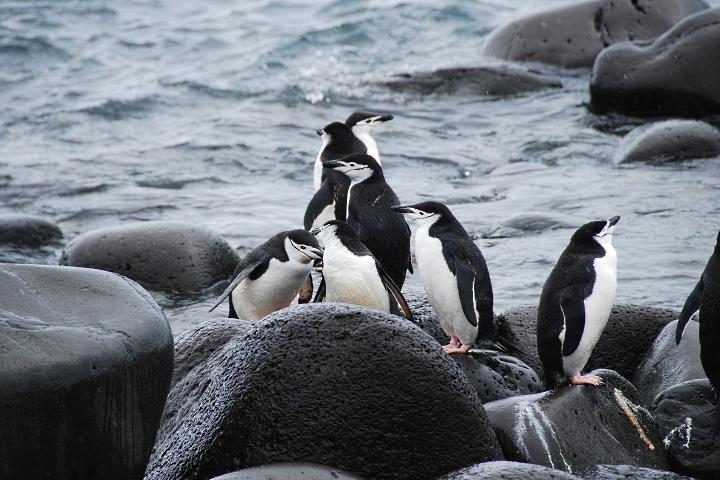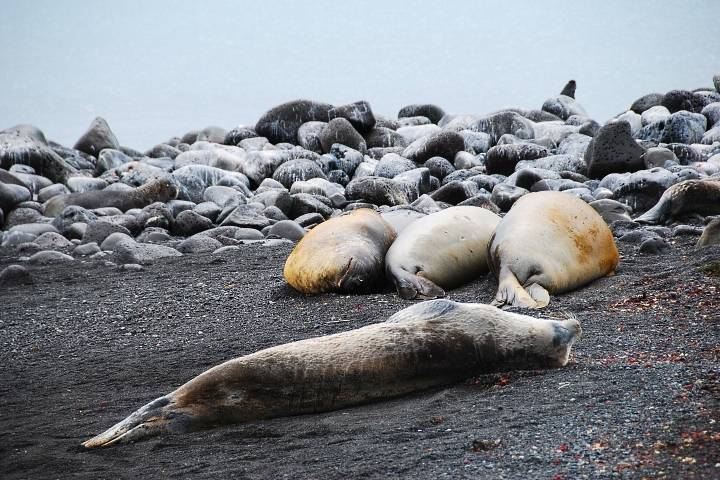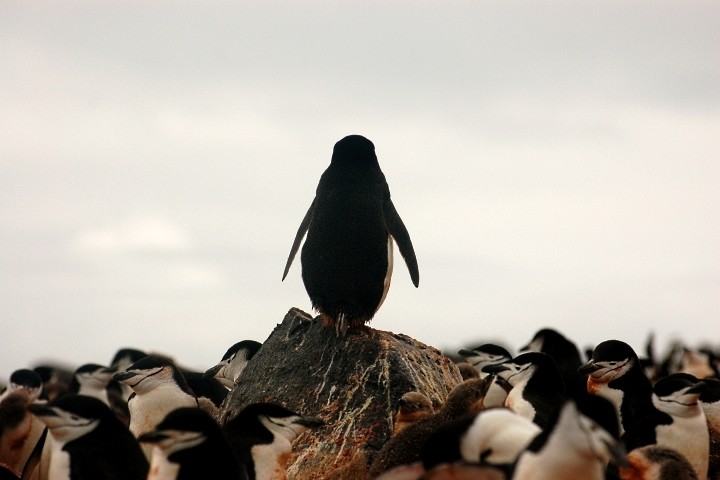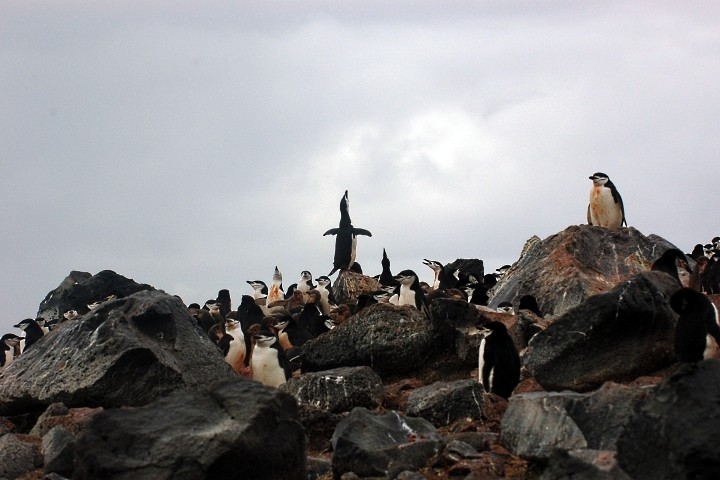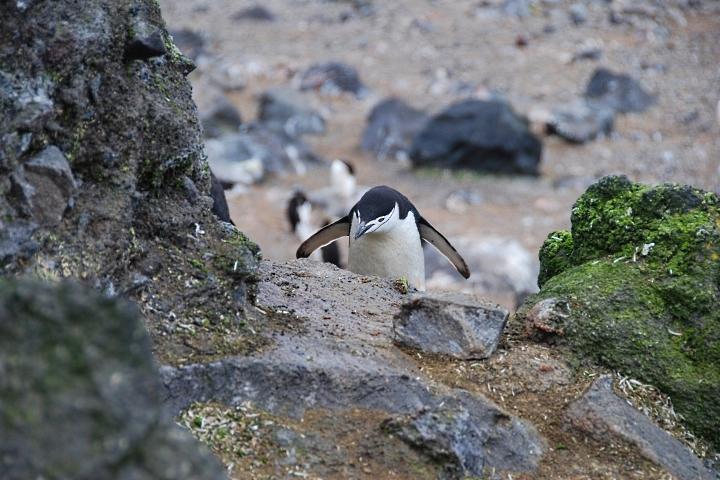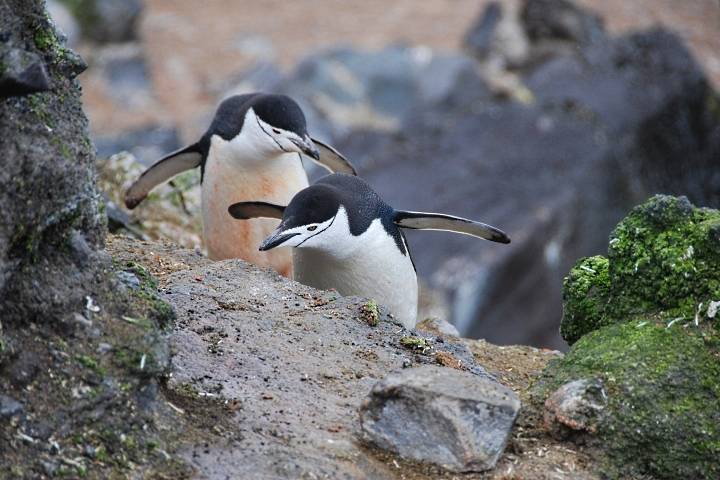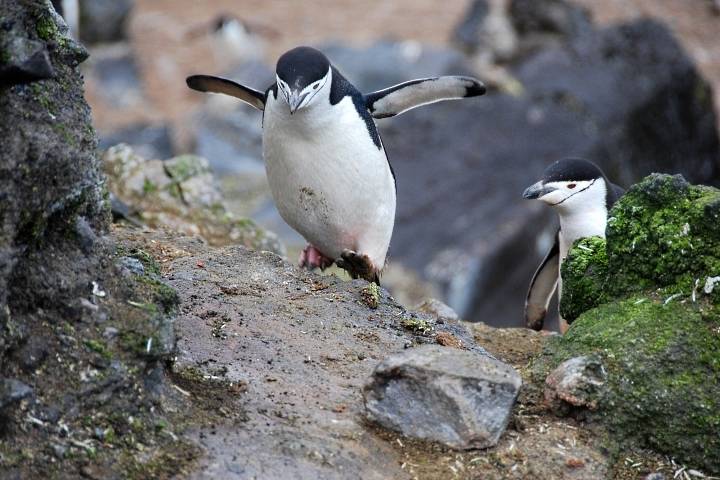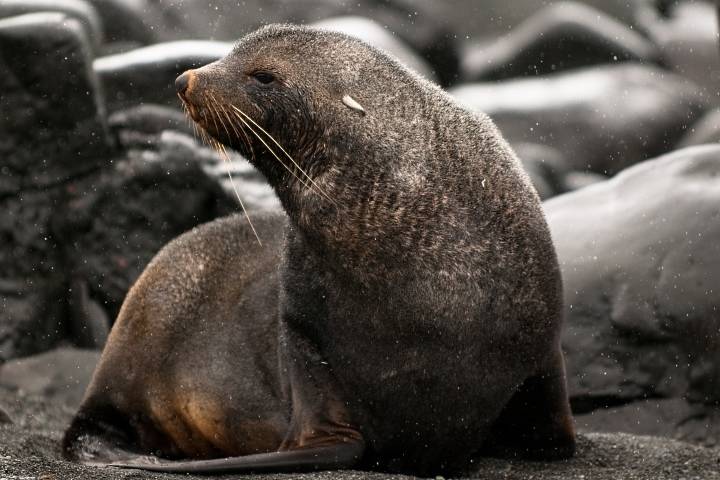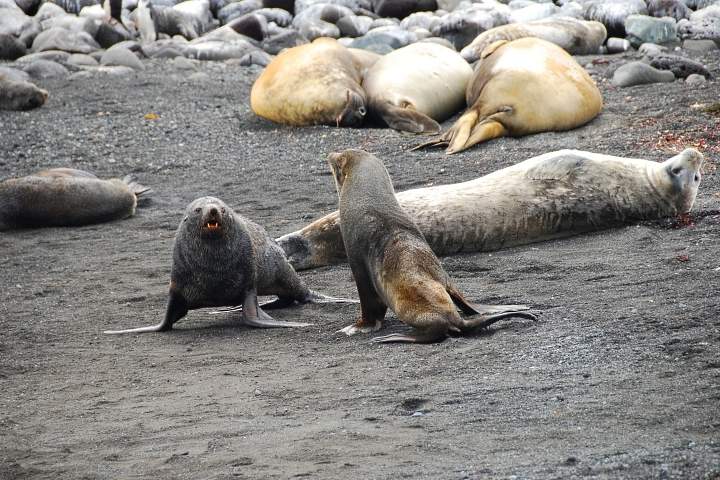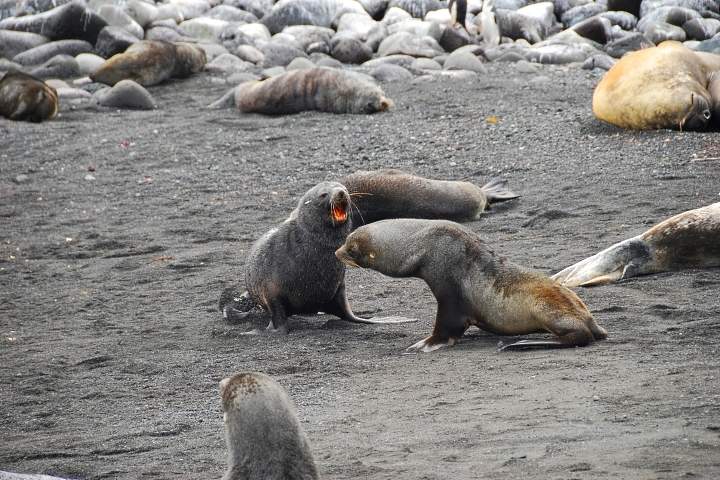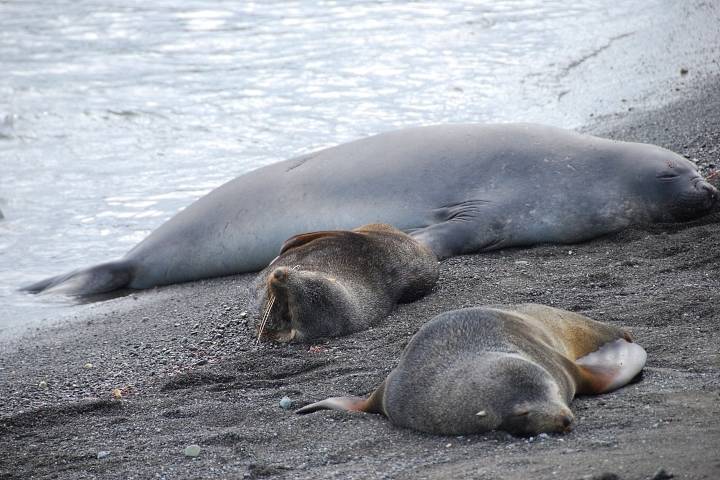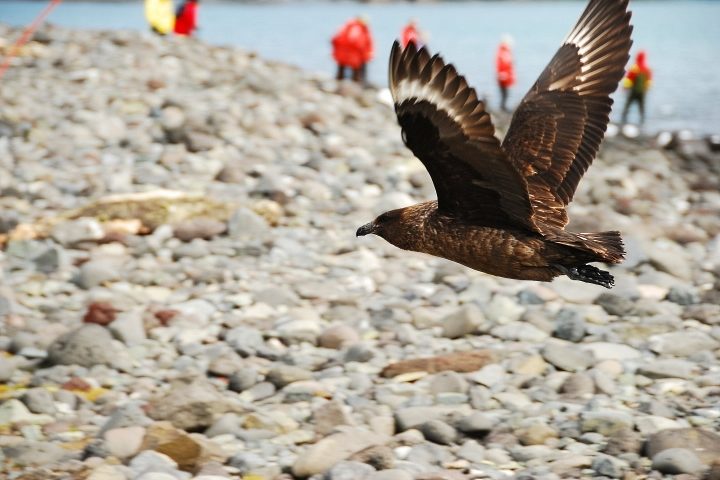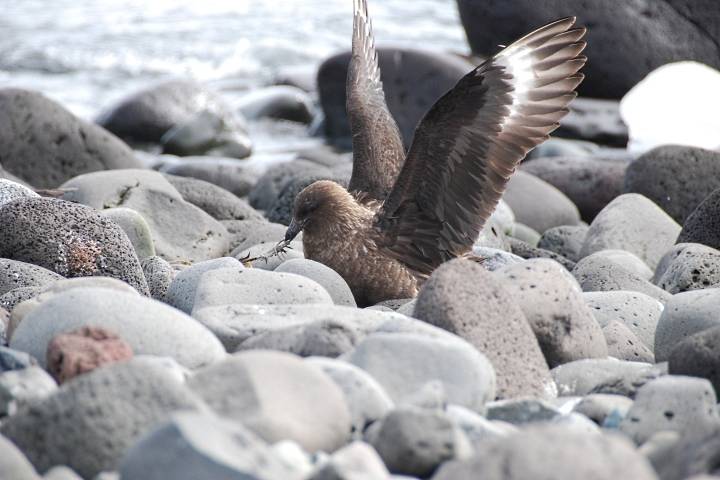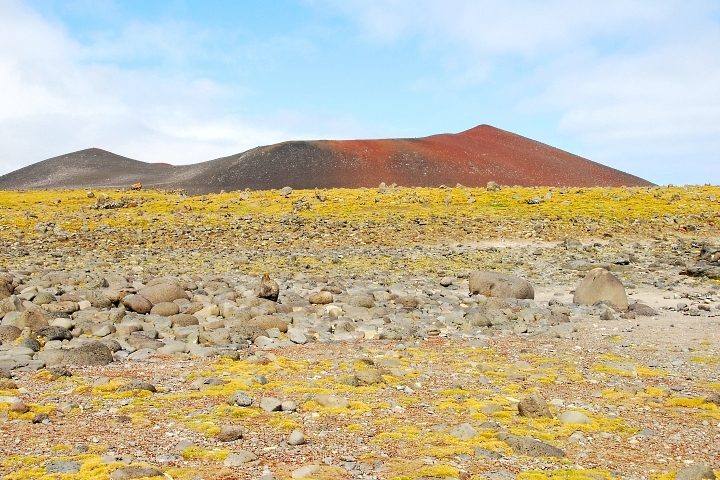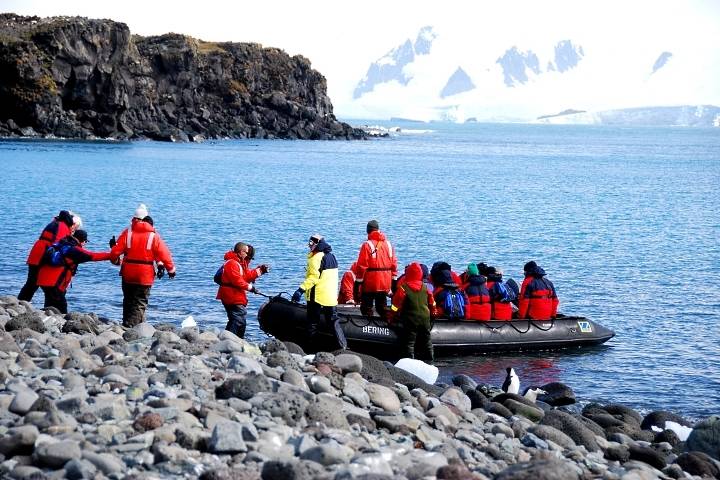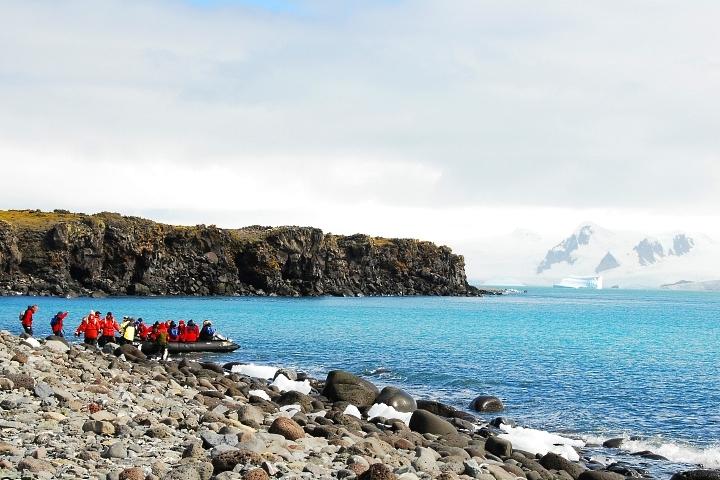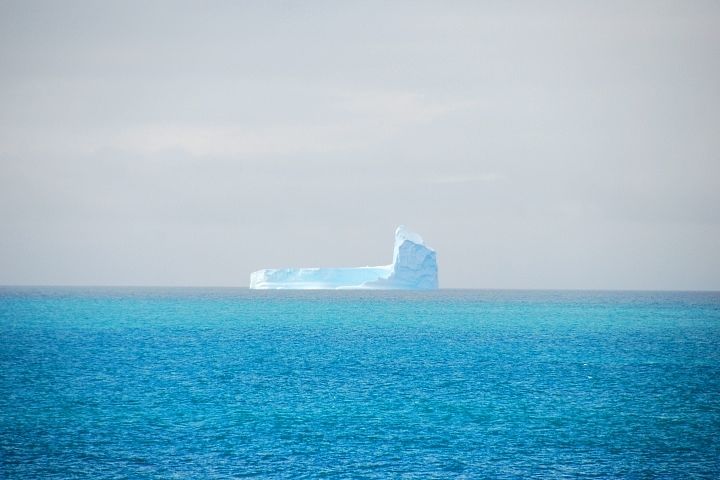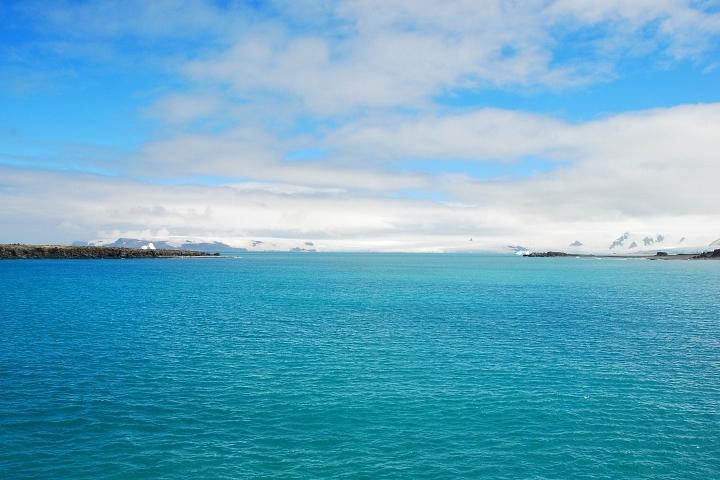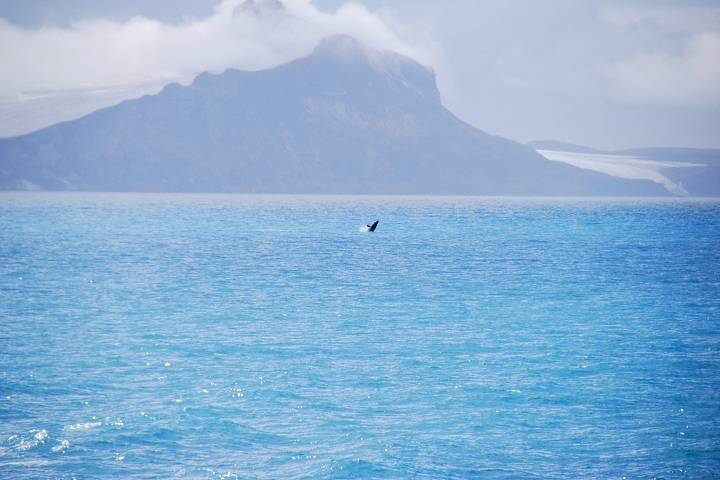Antarctica Cruise, Part 2: Landing in Antarctica
And now there came both mist and snow
And it grew wondrous cold:
And ice, mast-high, came floating by,
As green as emerald.
The Rime of the Ancient Mariner, Samuel Taylor Coleridge
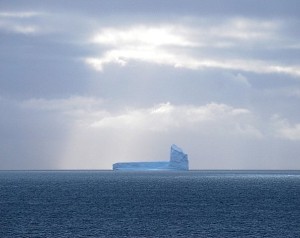 I knew when I opened my eyes in our darkened cabin that we had reached Antarctica -- the smooth ride gave it away. Drake Passage was behind us and would not be a factor again, at least until our return to Ushuaia.
I knew when I opened my eyes in our darkened cabin that we had reached Antarctica -- the smooth ride gave it away. Drake Passage was behind us and would not be a factor again, at least until our return to Ushuaia.
I fumbled for my watch -- 5am -- and moved quietly to the curtains for a peek. In latitude, we had survived the Furious Fifties and entered the Screaming Sixties. This far south, it would be light nearly 24 hours a day, but alas, from the port side, there was only the Southern Ocean to see.
Ten minutes later, dressed and laden with camera gear, I had the outside decks of the Minerva entirely to myself as I stood silent, mesmerized by the soaring white peaks of the South Shetland Islands and a massive iceberg -- taller than our vessel -- off our starboard side.
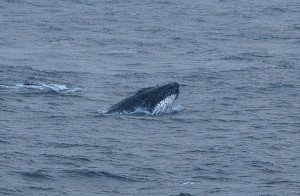
The sea and the sky were gray, with a temperature in the low 30s (F) and a brisk breeze that made it feel much colder. Suddenly, in the distance, a whale spouted, and almost simultaneously I was pelted by snow, horizontal snow that in five minutes had turned my gloves white as I fought to hold my camera steady against the wind.
My heart pounding, I was as excited as a child, desperately wanting to run back inside to scream to my traveling companions to get up, we're here, but unable to tear my eyes away from the view.
I saw six more whales that morning as the ship came to life -- humpbacks and minkes -- giant animals in a giant land.
By the time the Minerva cut her speed and began to approach Penguin Island, our first landing spot, I had missed breakfast altogether. Not to worry, in four days at sea I had eaten more than enough to tide me over.
I booked the Minerva because she is the finest of the ships that put people ashore in Antarctica. Twice a day for four days we were to spend 1½ to 2 hours exploring the shore or in motorized, inflatable rafts called Zodiacs, cruising through icebergs. Both of today's excursions were to be shore landings, and our excitement was palpable.
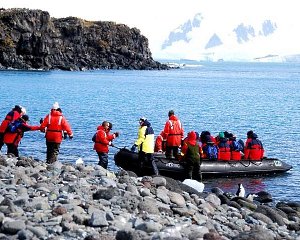
We met at the appointed place and time, climbed down temporary stairs on the outside of the ship and were helped into our Zodiacs, 10 guests per raft, along with a driver who was also a skilled naturalist.
We were bundled in new red parkas provided by the ship, ours to keep, waterproof pants and boots, gloves, caps and two or three layers underneath. The right gear is a necessity as every one of these items made a difference.
Five minutes later, we reached the rocky beach, threw our legs over the side of the raft and slipped into the ankle-deep water. We were met by our expedition leader, Suzana, who gave us the lay of the land, reminded us to stay at least 15 feet from the animals and birds so as not to disturb them, and warned us to steer clear of potentially aggressive fur seals that dotted the beach.
It was snowing again but the wind had nearly died as I stepped away from the group, cleared my head and took in the panorama.
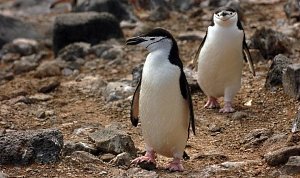
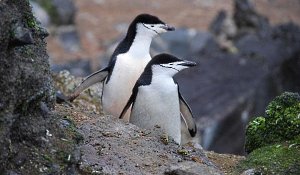
To my left, the rocky beach gave way to water and a distant island with snow-covered peaks and calving glaciers. Dead ahead, the Minerva was several hundred yards offshore, and there were three ship-sized icebergs a mile or more beyond. To my right, not far from the water, there were fur seals, elephant seals and a Weddell seal, and in the sky, giant petrels, skuas (penguin-eaters) and Antarctic terns.
Farther down the beach, the rocky shore led to an elevated plateau that was covered with hundreds of chinstrap penguins -- adults and chicks -- continuously squawking and chirping. I did not have to hike all the way to the rookery for a close-up view, though, as solos and groups of two or three or four chinstraps were solemnly marching in every direction -- including mine.
Penguins in Antarctica have no fear of humans and are as curious about us as we are about them. It seemed almost as if individual penguins had been assigned to watch each of us.
Several times that day I had to back up as the adorable little creatures -- apparently unaware of the 15-foot rule -- waddled right up to my camera as I knelt to take their pictures.
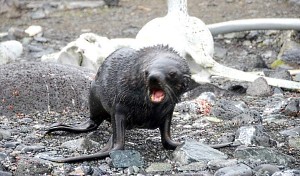
The exploration of Penguin Island was filled with "firsts" for me, including the first time I have ever been charged by a yelping fur seal. I don't know why he took an interest in me -- I was giving him a very wide berth. I wondered if he'd sensed weakness from that meal I had missed, and resolved not to miss any more.
I had been instructed by Suzana to clap my hands above my head in such a situation, which is easier said than done while holding a camera with a foot-long lens. Still, it worked, and there is a pre-clap photo of this fellow in this newsletter's slideshow. It's slightly out-of-focus as he was backing me into the ocean at the time.
At the rookery, we watched adult chinstraps feeding their young with regurgitated krill, a shrimp-like creature that is the main food for whales and seals as well. Chicks are the gray, furry penguins in the pictures, and they must molt into their black-and-white, waterproof plumage before the summer ends.
In only a few months, summer will close like a curtain and every drop of water within sight of this island will be frozen over for the long, dark winter. Young and old penguins must make their way far out to sea before that happens.

By the end of the excursion, the sun broke through the clouds and added color to the landscape. For the first time, I noticed an extinct volcano on nearby King George Island, and I was flabbergasted to hear that its red cone is called Deacon Peak.
Five thousand miles away, on that very same morning, the Deacons of Wake Forest University (my alma mater) had been elevated to the No. 1 position in men's basketball. It occurred to me that I was the only Deacon looking at Deacon Peak as the Deacons peaked.
Clearly, lack of food had begun to affect my mind.
We returned to the ship and remedied that situation with a hearty lunch of grilled German sausages on the aft deck. The bright sun turned the morning's gray water to near-tropical blues and greens.
With the ship's band playing and a whale breaching off our stern, the Minerva set sail for our next destination. We'd packed an awful lot into our first half day in Shangri-La, but we were only beginning.
Alan Fox, somewhere in Antarctica
Sincerely,
Alan Fox
Executive Chairman
Vacations To Go
Related newsletters:
Antarctica Cruise: On My Way
Antarctica Cruise, Part 1: Paying Drake’s Toll
Antarctica Cruise, Part 3: The Age of Explorers
Antarctica Cruise, Part 4: Antarctica's Wild Side
Antarctica Cruise, Part 5: Wonderland on Ice
Antarctica Cruise, Part 6: A Place Like No Other


